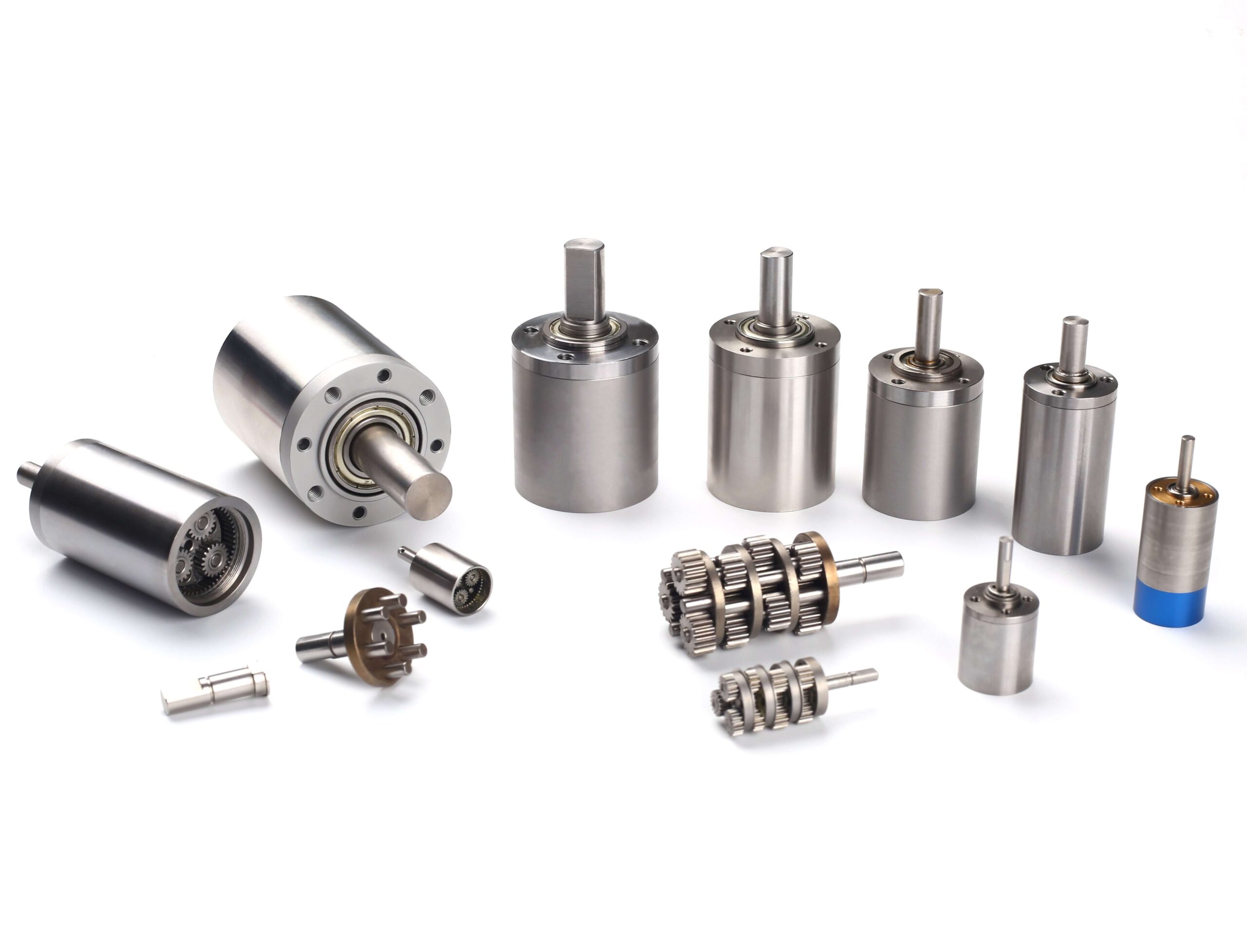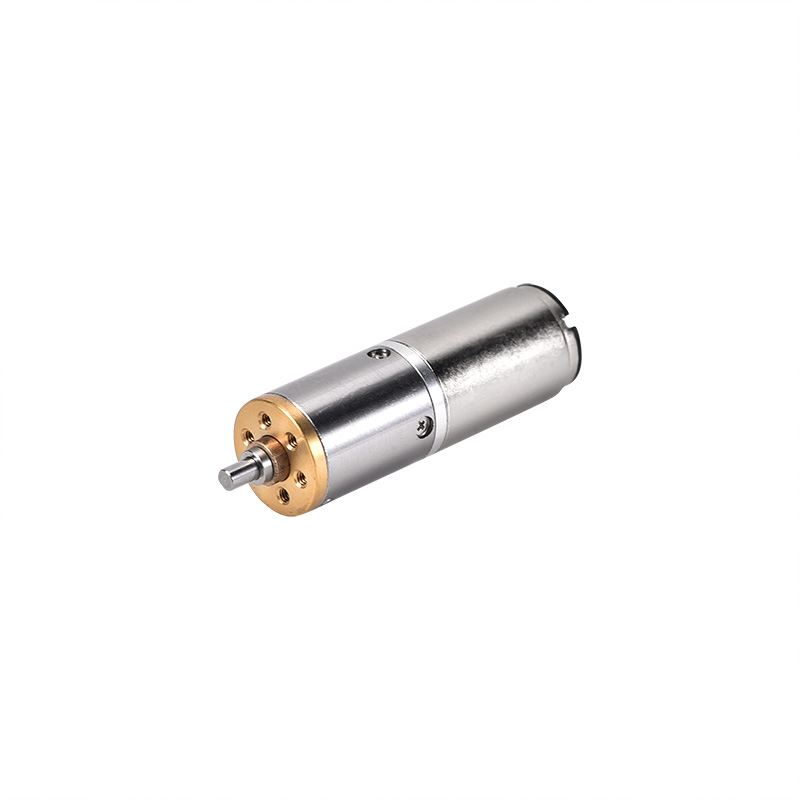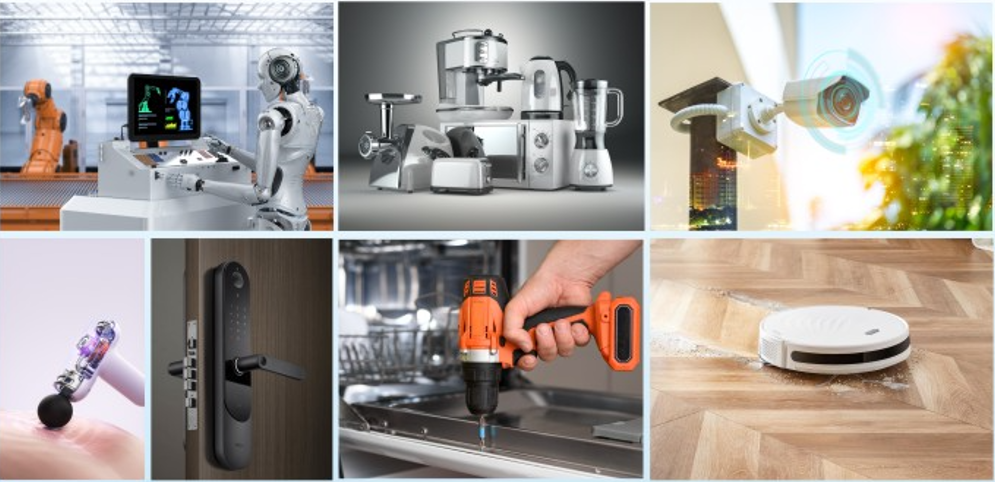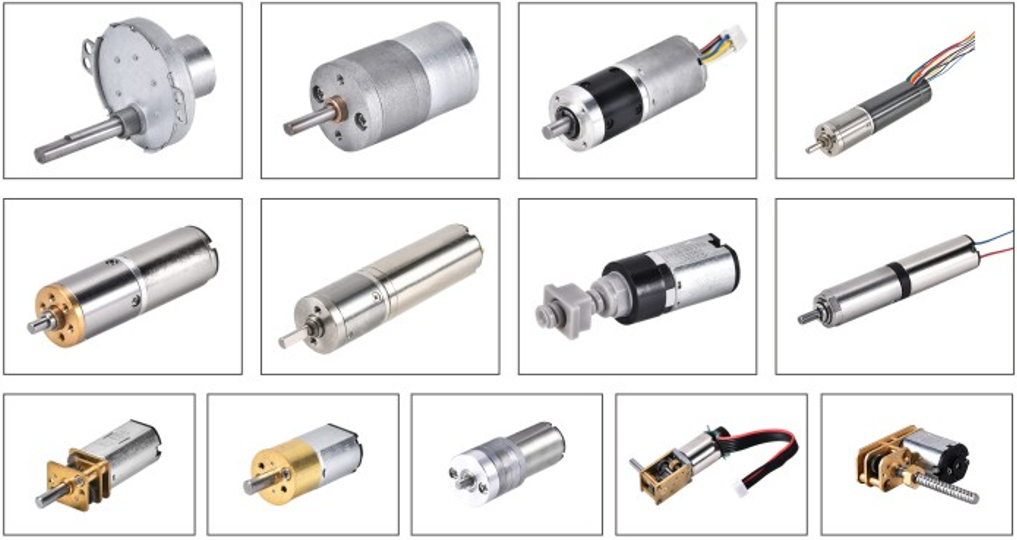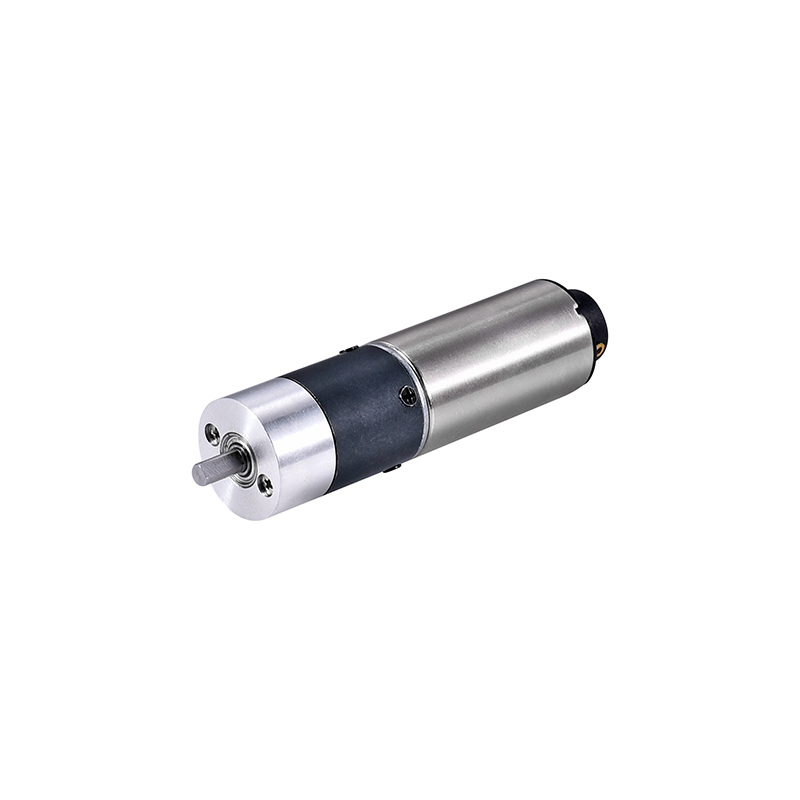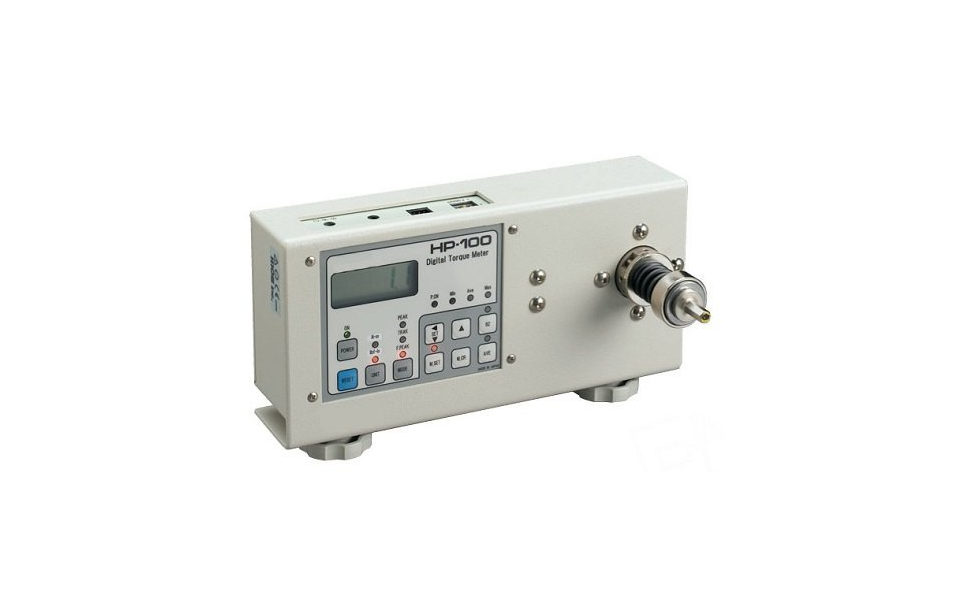
You need to Select Motors that work well for your torque needs. Getting the torque calculation right is very important for choosing a good motor. Many engineers have trouble with things like weather, tricky loads, and small spaces. Sometimes, picking a bigger motor to stop it from stalling wastes energy and money. If you know your torque needs and the problems in your project, you can make better and cheaper choices.
Principales conclusiones
Know your torque needs so you can choose the right motor. This helps the motor run well and use less energy. Add up load torque, acceleration torque, and a safety factor to get total torque. This keeps your system safe. Pick a motor type and specs that match your torque and speed needs. This gives better performance and helps the motor last longer. Think about where you will use the motor and how often it will run. This helps you pick a motor that is safe and lasts long in your place. Use tools from the manufacturer and test your motor. This helps you avoid mistakes and makes sure the motor is right for your project.
Why Torque Matters
Torque and Motor Performance
You need to understand torque if you want your motor to work well. Torque is the force that makes your machine move or turn. When you select a motor, you must match its torque to your application. If you get this right, your machine performance improves and your system runs smoothly.
Motor pole count affects torque and speed. Motors with more poles give you higher torque at lower speeds. For example, a 6-pole motor can handle heavy loads better than a 2-pole motor.
Torque and speed have an inverse relationship. If you increase torque, speed drops. If you need fast acceleration or must move heavy loads, you need higher torque.
High torque density means you get more power in a smaller motor. This is important when you have limited space but need strong machine performance.
The design of the motor, the materials used, and how you cool the motor all affect how much torque you get. Using high-strength magnets and better winding designs can boost torque and efficiency.
Note: Accurate torque measurement helps you control energy use and lower costs. Tools like dynamometers let you check torque and make sure your motor runs efficiently.
Risks of Incorrect Torque
If you pick a motor with the wrong torque, you risk many problems. A motor with too little torque cannot move your load through the full cycle. This leads to overheating and overload.
Overloaded motors get hot and wear out faster.
Your machine may stop working or break down more often.
You spend more money on repairs and replacements.
Incorrect torque can cause poor machine performance and higher energy bills.
You must always check torque needs carefully. Accurate torque calculations help you avoid wasted energy and extra costs. When you measure torque correctly, you make better choices and keep your system running longer.
Define Application Needs
Identify Drive Mechanism
First, you need to know what drive mechanism your project uses. The drive mechanism changes how the motor gives torque and speed. Each motor and drive system has special features that affect your choice.
AC induction motors are good for heavy power jobs. They use variable frequency drives (VFDs) to change speed and torque.
Brushed DC motors have strong starting torque. You can change their speed with easy circuits, but they waste more energy.
Brushless DC motors (BLDC) use electronics for exact torque and speed. They save energy and do not need much fixing.
Torque motors give strong torque at slow speeds. They do not need extra gears and are best for jobs needing careful control.
Pick a drive mechanism that fits what your project needs. Think about how each one handles torque, speed, and control. This helps your motor give enough power and work well.
Tip: Always check if the drive system fits in your space and works in your environment. Some motors are better with dust, water, or shaking.
Gather Load Data
You need good load data to pick the right motor. You must know how much force and movement your project needs. This helps you do the right load math and not pick a motor that is too big or too small.
Here are ways to get load data:
Use a dynamometer to see how the motor works with different loads. This tool copies real work situations.
Try inertia loading by hooking the motor to a flywheel. This shows how the motor acts when the load changes.
Put a real load on the motor shaft. This is like using pumps or fans in real life.
Do no-load tests to see idle speed and losses. This helps you know how the motor works when not loaded.
Use all these ways together for the best look at motor performance.
Getting good data lets you figure out load torque and other important things. Then you can pick a motor that fits your project and avoid mistakes that cost money.
Calculate Torque Requirements
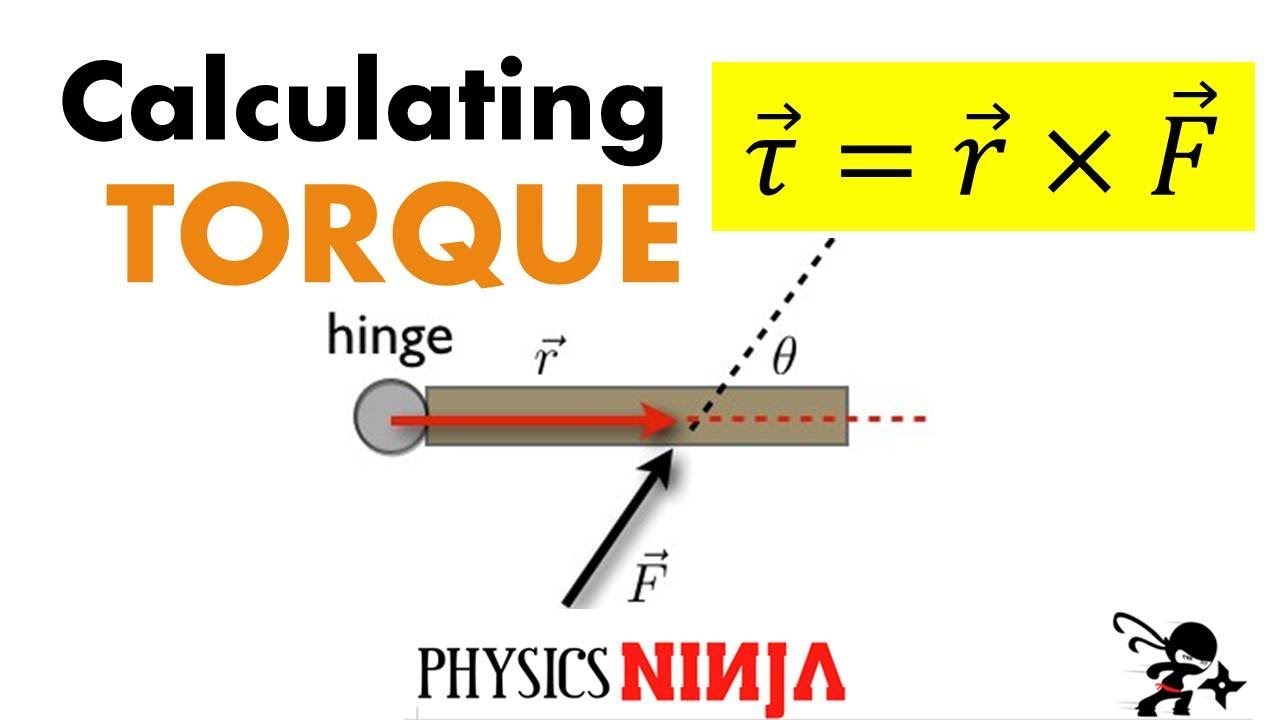
Load Torque
First, you need to know how to find load torque. Load torque is the turning force needed to move your machine. To figure it out, use this formula:
Load Torque (T) = Force (F) × Radius (r)
This means you multiply the force by the distance from the center. For example, if you use a pulley with 20 Newtons of force and a radius of 0.05 meters, the load torque is 1 Nm. Always remember to add friction and gravity when you do your math. These can change if your load is heavy or if the surface is rough. The angle you move things can also matter.
To get the best numbers, use real data from your machine. Try using a dynamometer or test the motor with the real load. This helps you find the true load torque your motor must handle. You should do this for every moving part, like conveyors, rotary tables, or fans. If your machine has loads that change, check the highest load torque during work.
Consejo: Always use the same units for force and radius. If you mix up Newton-meters and pound-inches, you can make mistakes.
Acceleration Torque
Once you know load torque, you need to find acceleration torque. Acceleration torque is the extra force to speed up your load or change its speed fast. This is important for machines that need to move quickly, like pick-and-place robots or fast conveyor belts.
Here is how you can find acceleration torque:
Add up the inertia of all moving parts. This includes the load and the motor rotor.
Decide how fast you want your machine to speed up. This is your acceleration rate.
Utiliza esta fórmula:
Acceleration Torque (Ta) = Total Inertia (J) × Acceleration (α)
If you use stepper or servo motors, you might need to change speeds from straight lines to spinning. For example, if you have a belt drive, change the belt speed to RPM using the pulley size. Always add the motor’s own inertia to your math. The total torque you need is load torque plus acceleration torque.
If your machine needs to speed up fast, watch the load torque during starts and stops. If you forget about acceleration torque, your motor might not go fast enough or could get too hot.
Nota: Do not pick your motor just by holding torque, especially for stepper motors. Always look at the speed-torque curve to make sure your motor gives enough torque at the speed you need.
Safety Factor
You should always use a safety factor in your torque math. The safety factor keeps your system safe from surprise loads, more friction, or tough conditions. Most people use a safety factor between 1.5 and 2.25. Multiply your total torque (load torque plus acceleration torque) by this number to get the final value for picking a motor.
Use a lower safety factor if your machine is steady and easy to control.
Use a higher safety factor if your machine faces dirt, shaking, or sudden changes.
The safety factor does not replace good design. It just gives you a little extra room for mistakes. For example, if your torque is 2 Nm and you use a safety factor of 2, pick a motor that can give at least 4 Nm of torque all the time.
Alert: It is better to pick a bigger motor with a good safety factor than a small one. A small motor can break fast and stop your machine.
Practical Tips and Common Pitfalls
Always check your units. Many mistakes happen when you mix up Newton-meters and pound-inches or confuse RPM with radians per second.
Use digital calculators or tools from the manufacturer to avoid mistakes in your math.
For loads that change or have shocks, look at the highest torque, not just the average.
Make sure your torque motor can handle both the real load torque and the acceleration torque, especially if your machine speeds up fast.
Check how often your machine runs. If it runs all the time, pick a motor with enough torque so it does not get too hot.
If you follow these steps, your torque motor will work well. You will avoid common mistakes in load torque math and keep your machine running smoothly.
Consider Speed and Inertia
Required Speed
You must know the speed your application needs before you select a motor. The required speed affects how well your system works and how much control you have. If you choose a motor that cannot reach the right speed, your machine may not finish tasks on time or may lose accuracy.
Required speed helps you decide if the motor can complete cycles quickly and precisely.
Always check the motor’s speed-torque curve. This curve shows if the motor can deliver the required torque at your needed speed.
Never run a motor at its maximum speed for long periods. Pick a motor with a speed rating a bit higher than what you need. This prevents overheating and reduces wear.
If your application needs fast starts and stops, look at the motor’s acceleration and deceleration abilities.
Use gearboxes or pulleys if your required speed is higher than what the motor can handle.
Heavy loads may need slower speeds for better control and efficiency.
Tip: Balancing speed and accuracy is important. High speeds can cause vibration and reduce precision.
Moment of Inertia
Moment of inertia tells you how hard it is to start or stop a load from spinning. You must calculate this value for your load shape to size your motor correctly. Use the right formula for your load:
Load Shape | Axis | Fórmula | Example Parameters | Example Calculation Result (mm^4) |
|---|---|---|---|---|
Rectangular Section | Strong Axis | I_y = (1/12) * h^3 * w | h=240 mm, w=120 mm | 1.3824 × 10^8 |
Weak Axis | I_z = (1/12) * h * w^3 | h=240 mm, w=120 mm | 3.456 × 10^7 | |
I/H Section | Strong Axis | I_y = (w * h^3)/12 – ((w – t_w) * (h – 2 * t_f)^3)/12 | h=300 mm, w=150 mm, t_f=10 mm, t_w=7 mm | 7.59 × 10^7 |
Weak Axis | I_z = ((h – 2 * t_f) * t_w^3)/12 + (2 * t_f * w^3)/12 | h=300 mm, w=150 mm, t_f=10 mm, t_w=7 mm | 5.63 × 10^6 | |
Circular Section | Both Axes | I_y = I_z = (π * D^4)/64 | D=100 mm | 4.91 × 10^6 |
Hollow Circular Tube | Both Axes | I_y = I_z = (π * (D^4 – d^4))/64 | D=100 mm, d=90 mm | 1.688 × 10^6 |
Hollow Rectangular Tube | Strong Axis | I_y = (W * H^3 – w * h^3)/12 | W=120 mm, H=240 mm, w=100 mm, h=220 mm | 4.95 × 10^7 |
Weak Axis | I_z = (W^3 * H – w^3 * h)/12 | W=120 mm, H=240 mm, w=100 mm, h=220 mm | 1.62 × 10^7 |
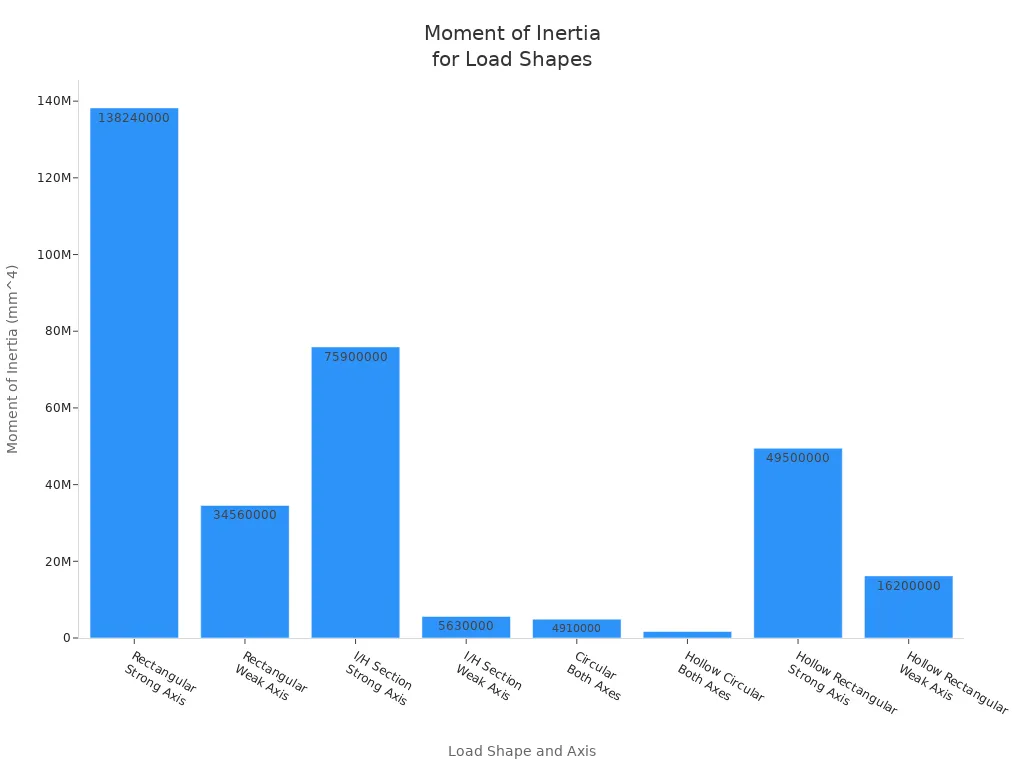
Note: Use the correct formula for your load shape. This helps you find the right moment of inertia and avoid mistakes in your torque calculations.
Inertia Matching
You need to match the inertia of your motor and load for smooth and stable operation. Inertia matching affects how fast your system responds and how easy it is to tune your controls.
A 1:1 ratio between load and motor inertia gives the best response and is easy to tune.
Most servo systems work well with a ratio up to 10:1. Stepper motors do best with a ratio up to 5:1.
If the ratio is too high, your system may become unstable. You may see overshoot, slow response, or even vibration.
Use gearboxes to lower the load inertia seen by the motor. This helps you keep the ratio within safe limits.
Stiff couplings and rigid frames help reduce problems from high inertia mismatch.
If you ignore inertia matching, your motor may draw more current, lose efficiency, or become unstable. Always check the inertia ratio when you size your motor for the required torque.
Alert: Directly coupling the load to the motor with minimal compliance can help maintain stability, even with higher inertia ratios.
Motor Selection Process
Compare Motor Types
You should look at different motor types before picking one. Each motor works best for certain jobs. Some motors give more torque at the start. Others keep a steady speed. Knowing these differences helps you choose the right motor.
Here is a table that lists the main motor types, their torque features, and where you might use them:
Tipo de motor | Descripción | Características del par | Industrial Use / Notes |
|---|---|---|---|
Squirrel Cage Induction Motor | Rotor has copper bars in a closed loop; no wires connect to rotor. | Strong and reliable; okay starting torque; little slip; needs little care. | Most common motor for general use in factories. |
Slip Ring (Wound Rotor) Motor | Rotor windings connect to outside resistors using slip rings. | Lets you add resistance to get more starting torque; good for heavy loads. | Used when you need high starting torque and speed control; more complex and costs more than squirrel cage. |
Synchronous Motor | Rotor turns at the same speed as the stator’s magnetic field; very efficient. | Runs at a steady speed; torque depends on the load; gives good torque at set speed. | Used when you need steady speed and high efficiency. |
Capacitor Start Induction Motor | Single-phase motor with a capacitor and extra winding for starting. | Gives more starting torque than normal single-phase motors; capacitor turns off after starting. | Used in single-phase jobs that need more starting torque. |
Capacitor Start and Run Motor | Single-phase motor with two capacitors for smoother running. | High starting torque and smooth running because the extra winding stays on. | Used when you need smooth running and high starting torque. |
AC Series Motor (Universal) | Has a commutator and series windings; can run on AC or DC. | Very high starting torque; good for tools and cranes. | Used in power tools, cranes, and jobs that need high starting torque. |
Reversible Motor | Like an induction motor but with a brake and balanced windings. | Higher starting torque than normal induction motors; made for quick starts and stops. | Used in conveyors and jobs that need fast reversals and medium torque. |
Electromagnetic Brake Motor | Induction or reversible motor with a brake that works when power is off. | Holds the load when power is off; stops quickly; torque is like the base motor when running. | Used in lifts or places where the load must stay still when power is off. |
Torque Motor | Made for high starting torque that drops as speed goes up. | Highest torque at zero speed; torque drops as speed rises; stays steady if stuck. | Used in winding, tensioning, and jobs needing careful torque control at many speeds. |
Hysteresis Motor | Synchronous motor with a special rotor; runs quietly and has no brushes. | Makes very low torque; only comes in small sizes; not very efficient. | Used in things like record players and clocks that need steady speed. |
Some motors, like the torque motor, give strong torque at slow speeds. Others, like the synchronous motor, keep the same speed for steady work. If you need a lot of torque to start, try slip ring motors or AC series motors.
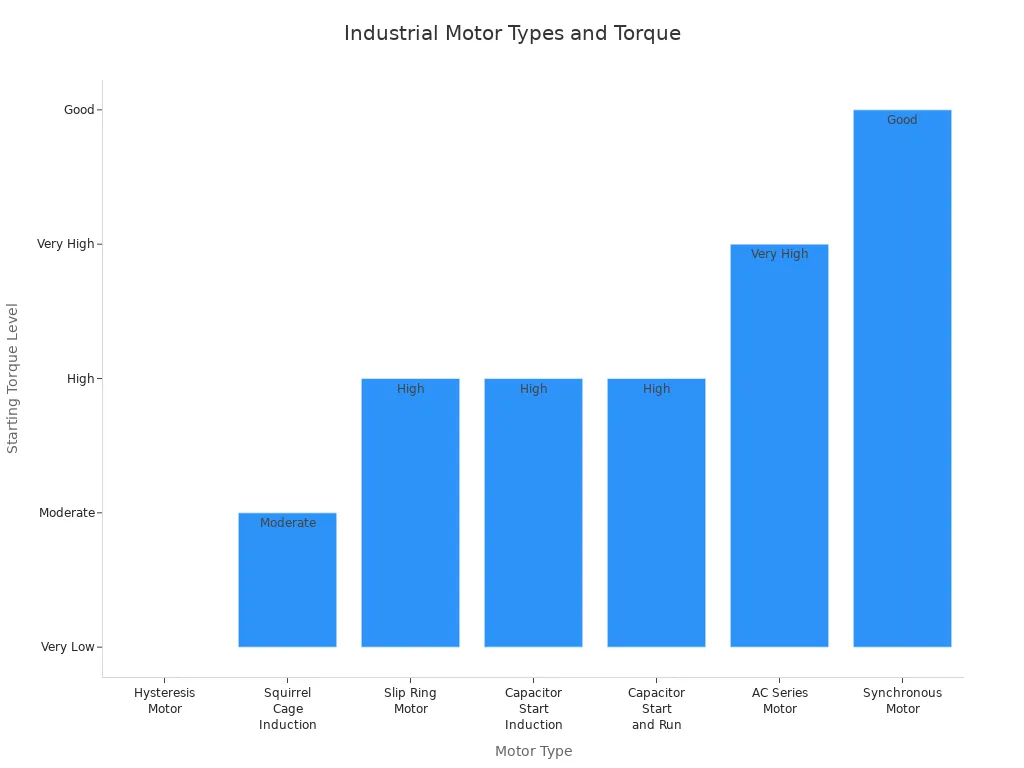
Tip: Always pick a motor type that matches your torque and speed needs. This makes your choice better and helps your project work well.
Match Specs to Torque Requirements
After you look at motor types, match the specs to your torque and speed needs. This step is important for picking the right size and saving energy.
Follow these steps to match specs:
Find the total torque your job needs. Add the torque for moving, speeding up, and fighting friction.
Use this formula for motor torque:
Motor Torque = (Inertia of Motor + Inertia of Load) × Angular AccelerationCheck if the motor gives enough torque at your top speed. Look at the speed-torque curve.
For direct drives, add the inertia of both motor and load. For indirect drives, add the load inertia from gears or belts.
Make sure the motor can run at top speed without getting too hot. The continuous torque rating must be enough.
Add extra torque for friction and sudden starts or stops.
If the inertia does not match, use gears or strong couplings. These help balance the system and make torque better.
Figure out the power you need using torque and speed. Make sure the motor power fits your job.
Note: Always check your numbers with real machine data. Use tools from the maker to double-check and avoid mistakes.
Environmental and Duty Cycle Factors
You need to think about the environment and how often the motor runs. These things change the size, efficiency, and life of the motor.
Key environmental factors:
Enclosure rating: Pick a motor that keeps out dust, water, and dirt. This helps the motor last longer.
Operating temperature: Make sure the motor can handle the heat or cold where you use it. Too much heat can hurt the motor.
Special environments: Use stainless steel or coatings if there are chemicals or food spills.
Duty cycle factors:
Duty cycle means how long the motor runs and rests. This changes what size motor you need.
Tipo de ciclo de trabajo | Descripción | Impact on Motor Selection and Sizing |
|---|---|---|
Trabajo continuo (S1) | Motor runs all the time under the same load until it gets warm and stays that way. | Needs a motor big enough to run non-stop without getting too hot; keeps temperature steady and works well. |
Short-Time Duty (S2) | Motor runs for a short time, then cools down before running again. | Can use a smaller motor since it cools off; must make sure it cools enough to avoid damage. |
Servicio periódico intermitente (S3) | Motor runs and rests in cycles but does not cool all the way. | Can use a smaller motor because it does not get as hot; size depends on how long it runs and rests. |
Periodic Duty (S3-S8) | Cycles have starts, stops, and changing loads or speeds without cooling all the way. | Needs a motor that can handle changing loads and heat; size must fit busy or changing work. |
If your job runs all the time, pick a motor for continuous duty. For short jobs, you can use a smaller motor, but let it cool down. Always check the duty cycle so the motor does not get too hot or wear out early.
Alert: If you forget about the environment or duty cycle, your motor can break, waste energy, or cost more. Always think about these things when picking a motor.
By following these steps, you make sure your motor fits your torque, speed, and work needs. This helps you pick motors that work well, save energy, and last a long time.
Final Tips for Select Motors
Use Manufacturer Tools
You can make picking a motor easier with online tools from top brands. These tools help you figure out torque, speed, and inertia for your project. For example, Celera Motion has a tool that lets you try out torque and speed. It also gives you steps to size your motor. You type in your load data and pick a shape. Then you can look at torque-speed charts. The tool checks if the motor fits your load inertia and duty cycle. This helps you pick motors that work for both your machine and power needs.
Many brands have special tools for different jobs. Here is a quick list:
Application Tool | What It Calculates |
|---|---|
Ball / Lead Screw | Torque, speed, accuracy, inertia |
Belt Actuator | Motor sizing for belt-driven systems |
Conveyor | Motor sizing for conveyor belts |
Arm | Motor sizing for robotic arms |
Rotary Device | Motor sizing for rotary tables |
Door / Gate | Motor sizing for doors and gates |
AGV | Motor sizing for guided vehicles |
You can use unit converters to check your numbers. These tools let you change between units for length, mass, inertia, torque, and speed. RealPars and other learning sites have guides and software to help you with screw, belt, and arm math. These resources let you enter material density, volume, and how things move. You get the right torque and speed numbers for your job.
Tip: Always use these tools to check your math before you pick a motor. This step helps you stop expensive mistakes.
Avoid Common Mistakes
You can stop many problems by watching out for common errors in motor sizing. Here are some mistakes and how to avoid them:
Reading torque-speed charts wrong. Always look at the chart for your real work needs.
Not checking for changing loads or tough places. Look at all load types and the work area before you pick a motor.
Forgetting about how well the motor works at different speeds. Pick a motor that works best in your main speed range.
Not doing regular care. Keep your motor clean and checked to stop breakdowns.
Not setting up control modes and inverter settings. Set these for your job to keep your motor safe and working well.
Note: Test your motor in real or test setups. This helps you find problems early and makes sure your motor sizing is right.
When you check your final pick, look at the drive type, load size, friction, and all motor details. Think about the work area, control type, and safety ratings. If you are not sure, ask for help from tech support or an expert. They can help you find the best answer for your project and make sure your motor sizing is correct.
You can pick the best motor if you do these things: First, figure out how much torque and speed you need. Think about all the things that affect your load. Next, find out the continuous torque and stall torque. Then, check if the motor can stay cool and not get too hot. After that, see if the motor’s details fit your project. Last, try out your motor in real life to make sure it works.
If you do your torque math right, your motor will last longer and not break. Use tools from the maker, look at the performance charts, and ask experts if you need help. You can also use online calculators or test your motor to be sure. This way, your motor will work well and not waste energy. 🚀
PREGUNTAS FRECUENTES
What happens if you choose a motor with too much torque?
If you pick a motor with too much torque, you waste energy and money. The motor may run less efficiently. You also risk damaging your machine’s parts over time.
How do you know if your torque calculation is correct?
You should double-check your math using manufacturer tools or online calculators. Test your motor with the real load. If the motor runs smoothly and does not overheat, your calculation is likely correct.
Can you use the same motor for different applications?
You should not use the same motor for every job. Each application has unique torque, speed, and duty cycle needs. Always size your motor for each specific task.
Why does the safety factor matter in motor selection?
The safety factor protects your system from unexpected loads or harsh conditions. It gives you extra margin so your motor does not fail early. Always include a safety factor in your torque calculation.
What is the best way to match motor speed and torque?
Check the speed-torque curve for your motor. Make sure the motor delivers enough torque at your required speed. Use gearboxes or pulleys if you need to adjust speed or torque for your application.
